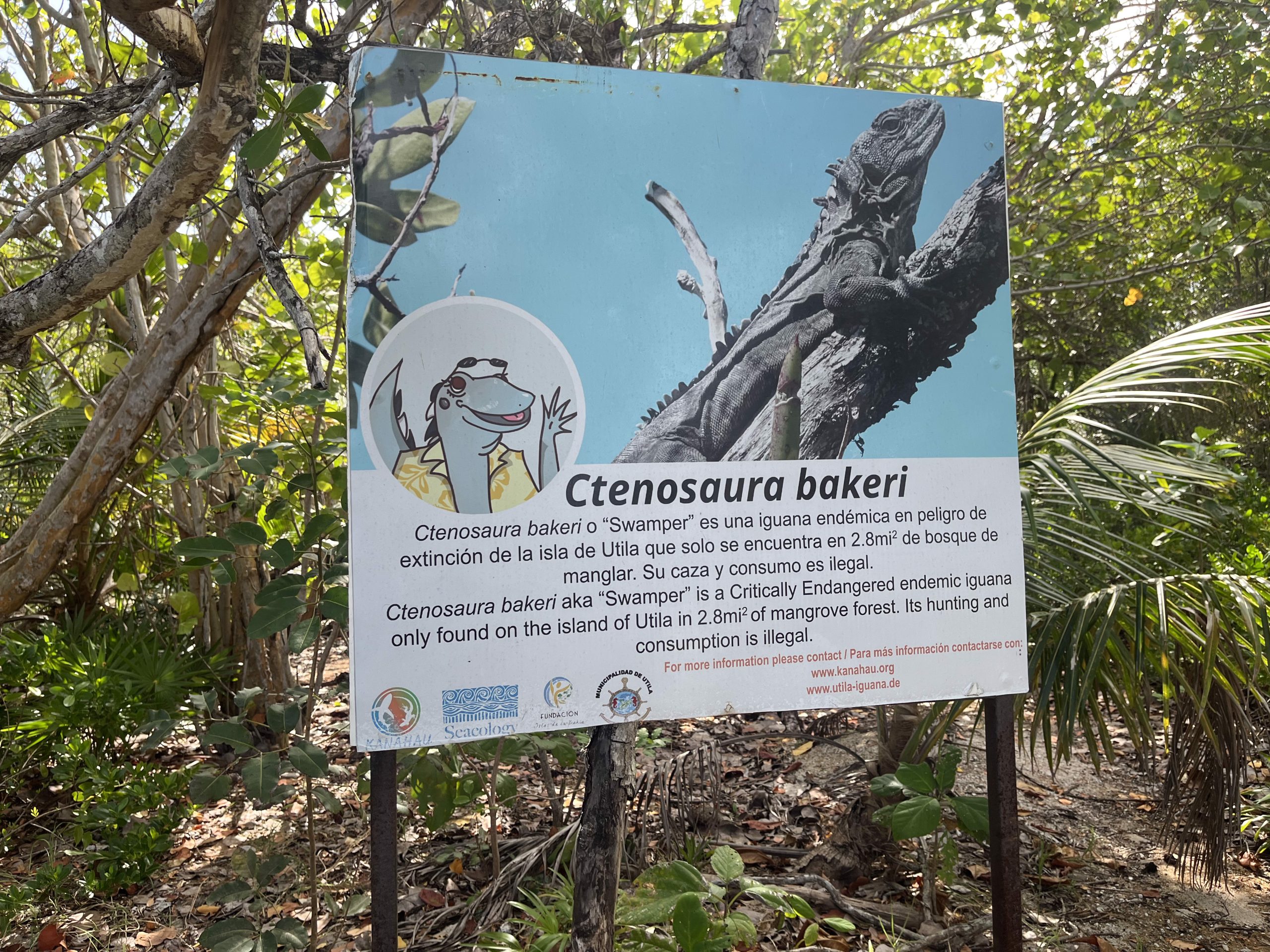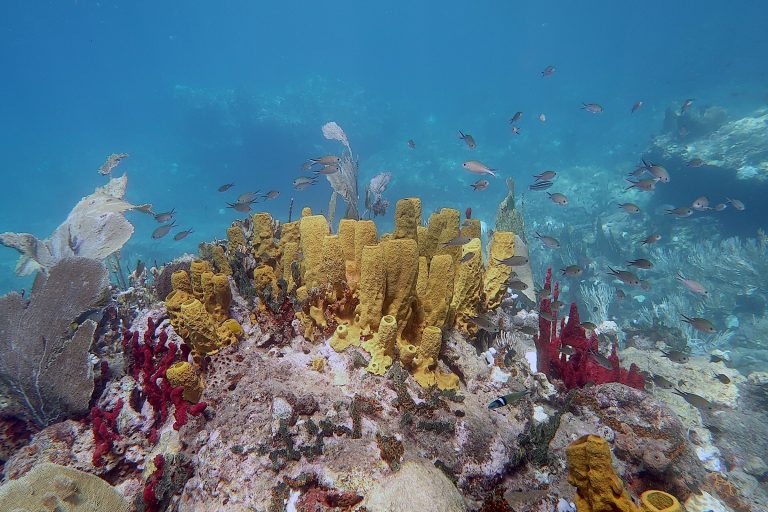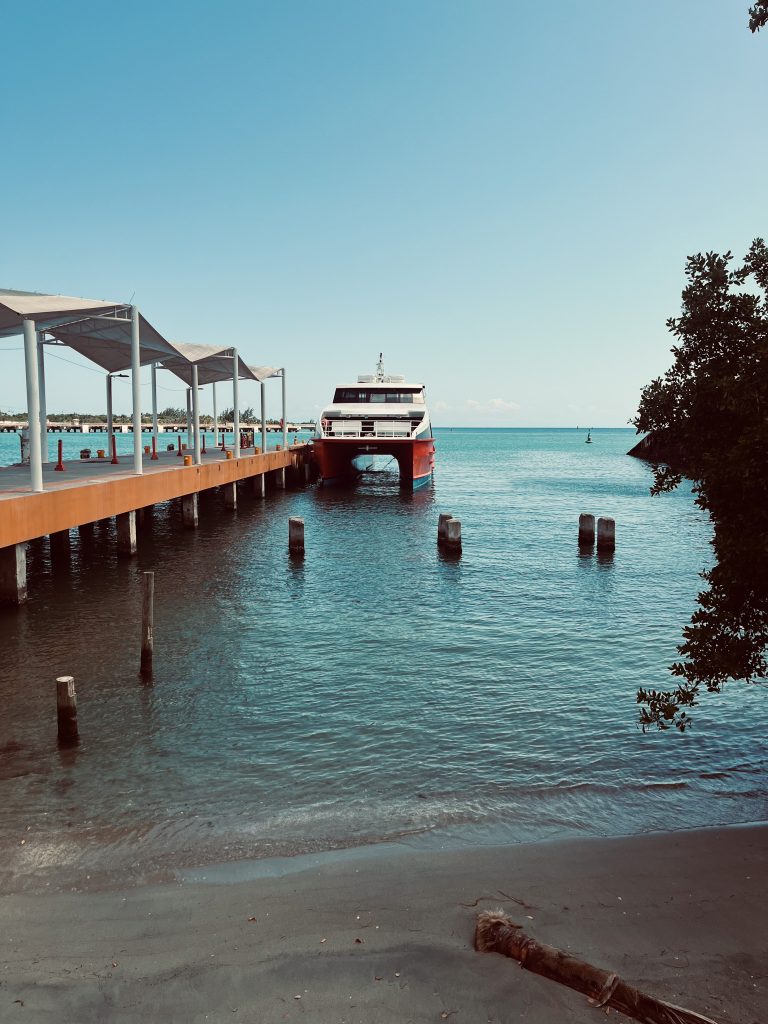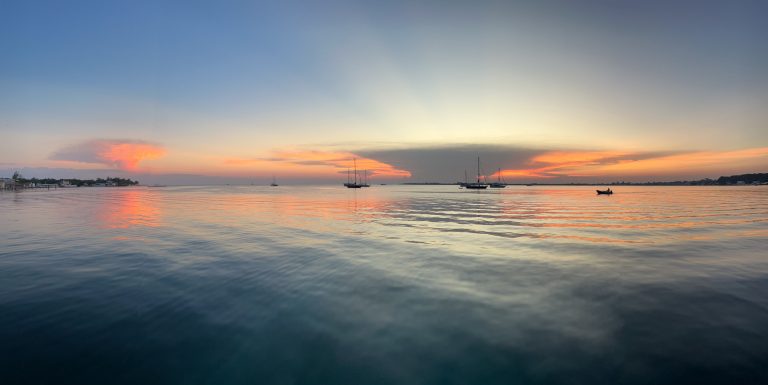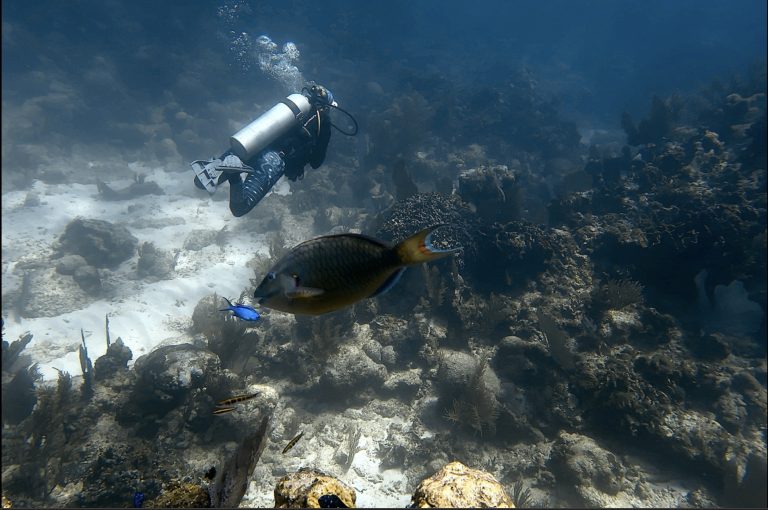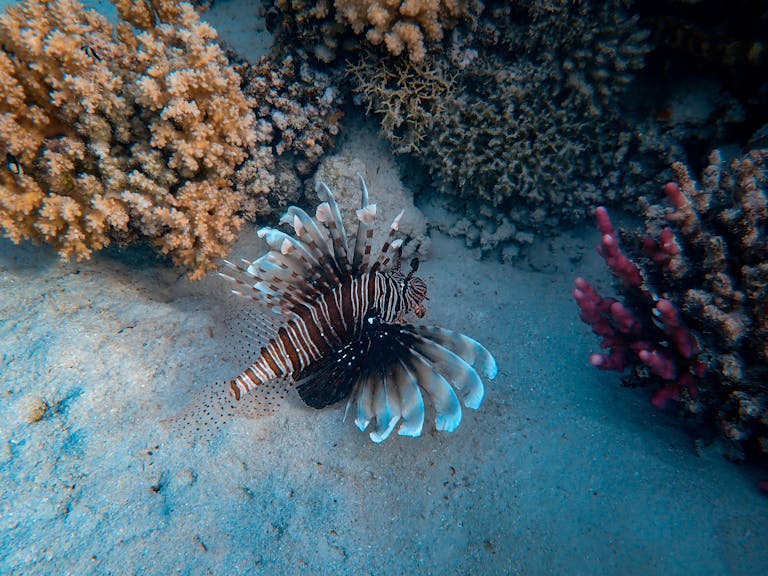Critically Endangered, Incredibly Endearing: The Story of Utila’s Swamper
🦎 Meet the Swamper : Utila’s endangered iguana
When I was in Utila doing the GoEco programme, what started as a day out replanting mangroves unravelled into the discovery of a cute and underrated little lizard—along with a comprehensive conservation plan to promote its survival. While the main focus of tourists revolves around the coast and the reefs, Utila has more surprises to offer, particularly for any well-rounded ecotourist eager to make a meaningful impact.

📊 Quick Facts :
- The Utila spiny-tailed iguana (Ctenosaura bakeri), or “Swamper“, is endemic to the island and is listed as Critically Endangered on the IUCN Red List.
- With only 4,500 to 7,700 individuals estimated to remain in 2019, the species faces numerous pressures despite being legally protected since 1994.
- A conservation plan is supported by two local NGOs—the Bay Islands Foundation and Kanahau Wildlife Conservation Organisation—and includes, among other efforts, a captive breeding programme.
- A cornerstone of the IUCN 2020–2025 Conservation Action Plan is to promote ecotourism around this key species to encourage behavioural change within the local community.
🌿 Life in the mangroves : A unique ecology
The Utila spiny-tailed iguana is a true island treasure. As a species found only on Utila, it has evolved to survive in a very specific environment: the mangrove swamps that line parts of the island. These tangled, waterlogged forests provide shade, food, and protection from predators. Their brackish lagoons and dense root systems make them an ideal—and increasingly rare—refuge.
Swampers aren’t restricted to just mangroves. When it’s time to nest, females travel to nearby sun-exposed sandy beaches to dig burrows and lay their eggs, making these secondary habitats equally important for the species’ survival. Today, their range is limited to about 6.5 km² in the Turtle Harbour Wildlife Refuge, a protected area in the island’s north-central region that was set up to help safeguard their habitat.
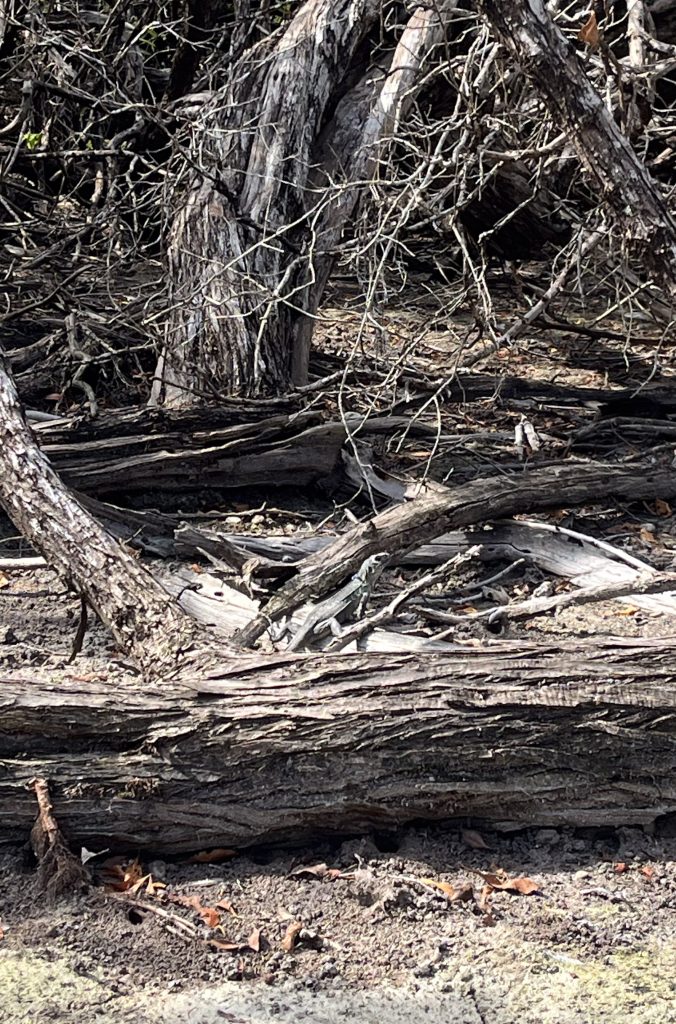
⚠️ Pressures threatening their survival
1. Habitat Loss
Ongoing mangrove clearance for development, agriculture, and aquaculture has significantly reduced the swamper’s home. This not only eliminates living space, but disrupts the delicate water balance mangroves rely on to survive.
2. Pollution
Runoff from agriculture introduces chemicals that poison the mangrove ecosystem. At the same time, plastic pollution litters the beaches where iguanas nest—making it difficult, sometimes impossible, for females to dig their burrows or for hatchlings to emerge.
3. Hunting and Poaching
Despite being a legally protected species since 1994, hunting and poaching still occur, even within the Turtle Harbour Wildlife Refuge. The swamper is still sought after for food, particularly during Easter, when demand for pregnant females increases. This severely impacts the breeding population and undermines conservation efforts.
4. Invasive Predators
Non-native species such as feral dogs and cats, and the introduced northern raccoon (Procyon lotor), prey on both adult iguanas and their eggs. These invasive animals thrive on the island and put even more pressure on an already fragile population.
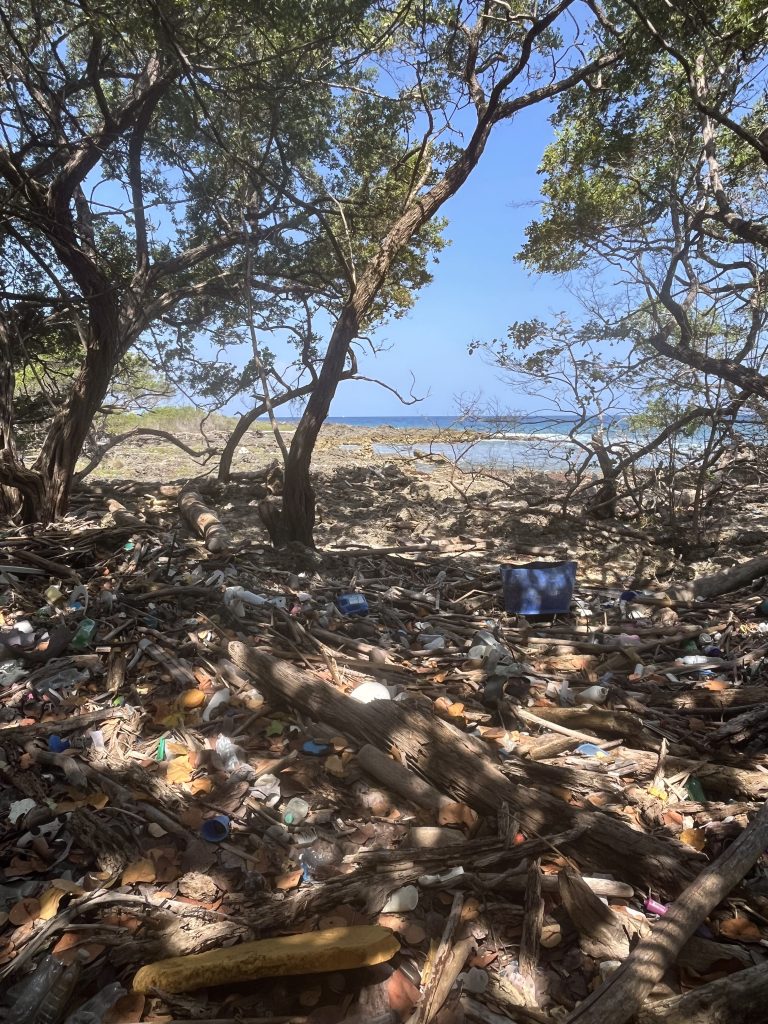
🛠️ Conservation actions making a difference
A number of actions are currently helping to reverse the swamper’s decline:
- The Turtle Harbour Wildlife Refuge provides legal protection for the species and its primary habitat.
- Education and outreach programmes are in place, especially targeting local schools. Many of these are led by former hunters turned conservation rangers, who now advocate for the very species they once hunted. Public screenings, workshops, and campaigns all help build community support.
- A captive breeding programme, started in 1997, raises hatchlings in protected enclosures before releasing them into the wild. These juveniles are tagged and monitored to assess survival and dispersal.
- Ongoing research and monitoring supports adaptive conservation strategies.
- Most importantly, ecotourism is being encouraged as a sustainable alternative to hunting or habitat destruction, by turning the swamper into a flagship species for the island and a symbol of local pride.

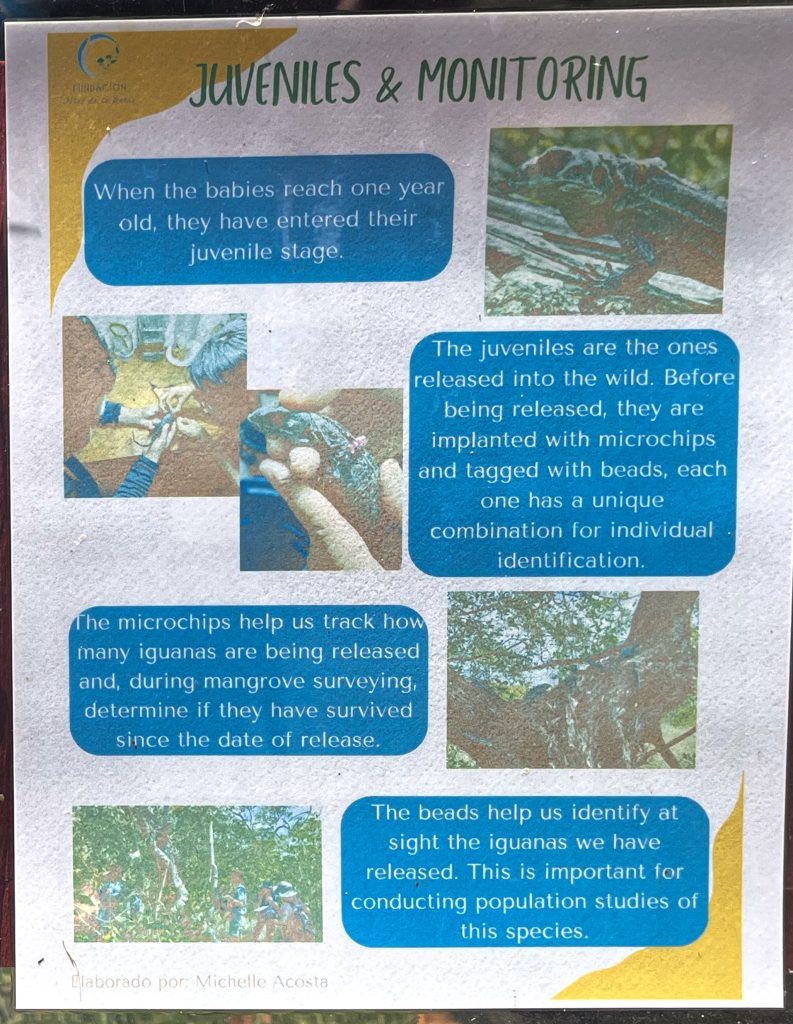

🚨 Urgent priorities for the future
Despite progress, some areas still need immediate attention to ensure the species’ survival:
- Restoring and reconnecting mangrove habitats to prevent further fragmentation.
- Clearing plastic waste, particularly in known nesting areas.
- Improving enforcement of wildlife laws, especially inside the protected refuge.
- Controlling invasive predators, with humane and ecologically sensitive methods.

💚 How you can make a difference
“Convert Utila spiny-tailed iguanas into a flagship species for biodiversity conservation and influence behavioural changes in the community to increase a sense of pride for the iguana.” — IUCN 2020–2025 Action Plan
First and foremost: pay them a visit!
Ecotourism is one of the most powerful tools for the conservation of the swamper. Simply showing up, booking a local eco-tour, or visiting conservation centres sends a clear message: a living iguana is worth more than a hunted one. Your visit contributes directly to the local economy and supports a conservation-friendly future.
Other easy but meaningful actions include:
- Joining community-based conservation events, such as mangrove planting or beach clean-ups.
- Choosing locally run guides and wildlife experiences, especially those that highlight the swamper and its habitat.
- Spreading the word—online or in person—to increase awareness and appreciation for this unique species.
- Looking into volunteer opportunities—reach out to the if you’d like to get involved firsthand.
Even a small effort can make a big impact when it’s multiplied by many!
Been to see the Swamper yet or planning to? Let me know in the comments or share your best photo!

